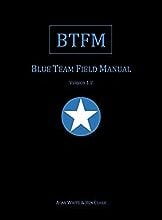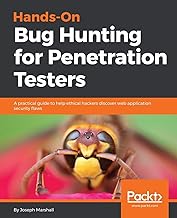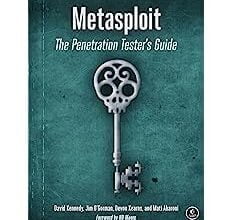Kali Linux Wireless Penetration Testing
Author: Vivek Ramachandran and Cameron Buchanan

Greetings, digital gladiators of the Bug Bounty universe! Fasten your seat belts and hang tight as we navigate through the binary matrix with another electrifying review of Kali Linux Wireless Penetration Testing by Vivek Ramachandran and Cameron Buchanan. Scoring an impressive 4.6 on our Bug Bounty Awesomeness Meter, this tome is nothing short of a Rosetta Stone for anyone looking to conquer the cryptic world of wireless networks.
Uncomplicated Brilliance
Let’s kick things off with what sets this book apart from the rest: its unparalleled clarity. When it comes to intricate subjects like wireless protocols, packet sniffing, and encryption standards, authors Ramachandran and Buchanan are truly magicians of translation. They transform highly technical jargon into comprehensible language, making the reader feel like an insider rather than an observer. As they put it so elegantly, “Complication is the enemy of execution.”
Practicality Meets Real-World Scenarios
Another forte of Kali Linux Wireless Penetration Testing lies in its action-packed, real-world examples. How many times have you read a cybersecurity book that’s all theory and zero application? Fortunately, this isn’t one of them. This book offers an abundance of hands-on exercises and practical scenarios, ensuring you’re not just book-smart but also street-smart when it comes to dealing with rogue networks. Or, as the authors recommend, “Always be ready. The battlefield is everywhere.”
A Tour of Kali Linux Tools
In the ever-expanding field of cybersecurity, tools are your best friends, and in this aspect, the book delivers. Diving deep into the treasure trove of tools available in the Kali Linux ecosystem, it provides readers with a comprehensive guide to exploiting various wireless vulnerabilities. As Ramachandran and Buchanan point out, “Kali Linux isn’t just a tool; it’s a full-blown arsenal.”
Examples from the Book
Example 1: Using Aircrack-ng for Cracking WEP Encryption
One example that stands out is the detailed walkthrough of using Aircrack-ng to crack WEP encryption. The authors guide you through the steps of capturing WEP-encrypted packets and then utilizing Aircrack-ng to decipher the encryption key. It’s an eye-opener on how fragile some older encryption standards can be and why moving to more secure alternatives like WPA3 is crucial.
Example 2: Packet Sniffing with Wireshark
Another valuable lesson in the book is the practical guide to packet sniffing using Wireshark. You’ll learn how to capture wireless packets in real-time and filter for relevant information, aiding in vulnerability assessment or evidence collection for ethical hacking.
Example 3: Social Engineering with the Social-Engineer Toolkit (SET)
The book also delves into softer aspects of cybersecurity, such as social engineering attacks. By using the Social-Engineer Toolkit (SET) in Kali Linux, the authors demonstrate how to craft phishing emails that can deceive users into revealing sensitive information, serving as a powerful reminder to maintain vigilance not just in network security but also in human interactions.
Room for Improvement
However, even classics aren’t without their flaws. One limitation is the book’s somewhat outdated focus on wireless standards. While the book offers a solid foundation, it could benefit from a section devoted to the latest WiFi 6 protocols and WPA3 security features.
Another area that the authors could beef up is defense against the very attacks they teach. While understanding offense is important, as the authors aptly warn, “A good warrior knows their enemy’s tactics,” adding a detailed section on countermeasures would round out the book quite nicely.
For Whom Is This Book?
When it comes to skill level, this book runs the full gamut. Novices will find the basic sections enlightening, while seasoned pros will appreciate the more advanced exploits and techniques. For experts, the book serves as a condensed refresher, offering perhaps some new avenues of thought or application. “There’s no endpoint in learning,” the authors wisely remind us.
Conclusion
To sum it all up, Kali Linux Wireless Penetration Testing is an indispensable resource for bug bounty hunters, penetration testers, and cybersecurity professionals. While the book could benefit from updates on current wireless standards and deeper insights into defensive strategies, it remains a seminal guide for mastering wireless penetration testing. The authors conclude with a thought that resonates across all levels of expertise: “Cyberspace is an ocean, and the one with the best compass navigates it the best.”
So, as you hone your cyber skills, remember this advice from Ramachandran and Buchanan: “A true warrior is the one who conquers themselves.” Ready to disrupt networks? Let’s do it, but remember to stay ethical. After all, we’re here to crash systems, not parties!




